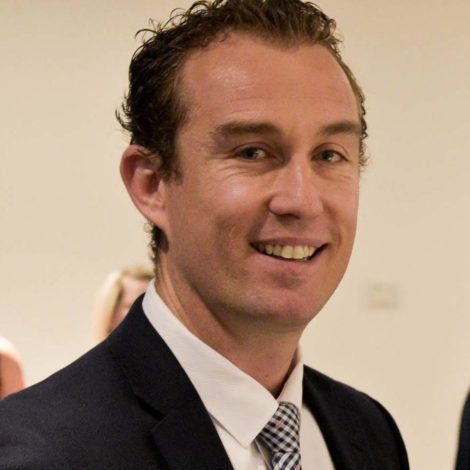Investing is almost like a religion to me.
I love that when you listen to the very best investors speak, they comment about how they are always learning.
My goal in this article is to share with you, the reader, hungry to improve your own investing skills, some profound insights that have shaped my investment process that I have gained through my association with Rask Invest and its founder Owen Raszkiewicz. But first, to better highlight these important lessons for me, I’d like to paint a picture of how I have come to this way of thinking around my investing.
Investing In Property At 21
When I was 21, I became obsessed with buying an investment property. Luckily for me, I had grown up in a small town in North West Qld called Mount Isa. My research had returned quite interesting information about a property I could purchase for $127,000 that was achieving $340 a week in rent (yes, that’s a 14% rental yield). Thinking I had struck gold, or copper (Mt Isa is a copper mine), I purchased the property. However, I had not done any other real research about the risks of buying in a town heavily dependent on commodity prices.
Luckily for me, the town soon after went through a massive change as Mount Isa Mines was purchased by a mining group called Xstrata Co, leading to an increase in the local workforce by roughly 2,000 people. This kind of population increase, which in a town of roughly 18,000, saw a big shift in the demand for housing, leading to significant upward pricing pressure for the local market. This wonderfully unexpected activity led to my first little investment rising in value to $360,000 in just two years, when I promptly sold and took the profit.
While I patted myself on the back for my brilliance, I can absolutely say there is truth in the saying, “It’s better to be lucky than smart.” After I sold, the investing bug had a firm grip on me and my mind has been racing ever since about the skills and knowledge that can be applied to purchase and sell assets for more money in the future.
Nearly 20 years and seven properties later, I find myself today more interested in applying the skills I have learned to investing in shares of listed companies.
The Way I Invest
Like most early students of trading equities, my research led me to the Oracle of Omaha, Warren Buffett. My early readings of Buffett gave me some fascinating inner workings of listed investments, giving me an understanding about what I was buying and what might be a good investment.
With this grounding for purchasing shares, the lessons that really clicked for me and defined my investment approach would be buying things that were ‘cheap’. In the early days, I viewed myself as a value investor, but if I’m being accurate, I would probably better describe myself as a “cigar butt” investor. For those who are reading an article like this for the first time, a cigar butt investor looks to buy shares in companies which are discounted below their appropriate value with a hunch that the price is likely to go up at least a little bit in the future.
The analogy comes from the idea that if you found a cigar butt on the ground that was still burning, a resourceful person has an opportunity to take one final puff before it is worthless. Today, my investment philosophy would be more traditionally thought of as a ‘growth’ investor. Regardless of the label I apply, I believe my goal is to find shares of companies that I can invest in for the long term.
Continuous Learning Is Essential To Successful Investing
While I’ve had some wins and losses in my early days with cigar butts, I have always been very focused on learning more as a way to “sharpen my axe” and be a better investor. Acknowledging Buffett again, one of my favourite quotes is, “Read 500 pages every day. That’s how knowledge works, it builds up like compound interest”.
While I’d like to read a lot more, like most busy people, I need to squeeze my personal development around a normal working and family life. The easiest way for me to get information quickly is with podcasts. I spend about 30 mins in the car every day, so I can knock out an average podcast every two days. Consuming information like this I can easily listen to new ideas, learn new terms and quickly dial into opinions about the current economic conditions. Some of the best usable investment knowledge I have gained has come from this type of media, and I’d like to share three of the most significant investment concepts that have shaped my current investment process.
Investment Idea 1 – If you are buying cheap, or always searching for a traditionally defined Margin of Safety, you might be rolling the dice with your wealth.
My first profound thought came directly from a Rask interview of Joe Magyer of Lakehouse Capital. If you haven’t watched this interview, please check it out. It’s one hour of pure gold investment nuggets.
“If you are an investor that is buying stocks that have been oversold you are catching up on the thesis of the business and it is quite easy to become the patsy at the poker table.” – Joe Magyer.
Joe explains that when a stock drops from poor news it is easy to think, ‘let’s buy and average down’. Interestingly, these are the situations where Joe has lost the most money professionally. Joe continues with why it shouldn’t always be commonplace to sell if a share rises above an estimated valuation target, as you never know what the future may hold for a good company.
I’m not saying do not look for low valuations, and I’m certainly not saying to only buy companies with prices going up, but I am saying that buying companies that seem instantly cheap could be due to the fact they are cheap for a reason. And if you haven’t done the work you are in danger of becoming the patsy at the poker table.
If you are basing your decision around something like ‘its P/E ratio is 15% down from its long term average, so I think it’s time to buy’, I would urge you to do a bit more research. Our goal as investors should be to find companies we can hold for the long term and will compound our money into the future. It is important that we do not settle for companies that may not achieve this goal, but do tick the box of looking cheap at the time of purchase.
Investment Idea 2 – Think second about the numbers, first about the customers.
The second investment idea has come from a quote from an investor named David Gardner, co-founder of The Motley Fool.
“I’m not too worried about the stock, but am more interested in the businesses themselves” – David Gardner.
This piece of investment advice was a bit of a slap in the face for me, and to explain why, I’m going to let you in on a personal secret. I am an enormous Excel geek.
I have correlations, tracking charts, experiments mashing data sources together, you name it and I’ve probably got a sheet on it somewhere I can show you. I am so tragic in my love for Excel and spreadsheets it is not unlike me to bring up in conversation useful ways Excel can add value to your everyday life. I tell you this not to make you instantly like me, but to highlight that you may be the type of investor who bases buying decisions around the inputs that have been defined in a great Excel sheet.
What I love about the David Gardner quote above is that a significant part of your research should be in finding out why you think a company will grow and hold market share into the future, or why its customers will happily pay more for a service in a market where competition might be growing. This research is not done in Excel. It is done by properly understanding the business, its competition and customers. If you haven’t started a document like this for the companies you are thinking to purchase, I would suggest not opening Excel until you have.
Investment Idea 3 – Focus on simple investment ideas that are easy to explain and understand.
This final investment idea has been one of the most important discoveries for me as an investor.
“It is often assumed that techniques that are more complicated in investing, must be more effective because they are complicated” – Morgan Housel.
If you, the reader, are anything like me, I know that you have experienced the amazing depths of financial jargon in your search to improve your knowledge about investing.
There are times when I feel like we are moving into a world of quantitative analysis, statistical significance and technical domination that only allows the absolute gifted to apply for a position in the world of investments.
The thing I love most about Morgan’s quote above is that we can all relate to an experience where something has been overcomplicated for no apparent reason. The reality is that great people create great products that when combined with just the right set of circumstances, create environments where customers will purchase these products for extended periods into the future. The trick is doing the work to find these opportunities and staying with them for the long term.
Next Steps
In summary, I love that investing is a skill that I will continue to perfect long past the end of my professional career. As I continue on my search for exciting companies, I’m going to put myself in the customer’s shoes more often and ask myself why I would continue to purchase a product or service from companies for the foreseeable future. If I can feel confident about my reasoning around this, then I will roll up my sleeves and dive in for a closer look. I hope this article will help you to do the same.
Disclosure: At the time of writing, Ryan does not have a financial interest in any of the companies mentioned.











